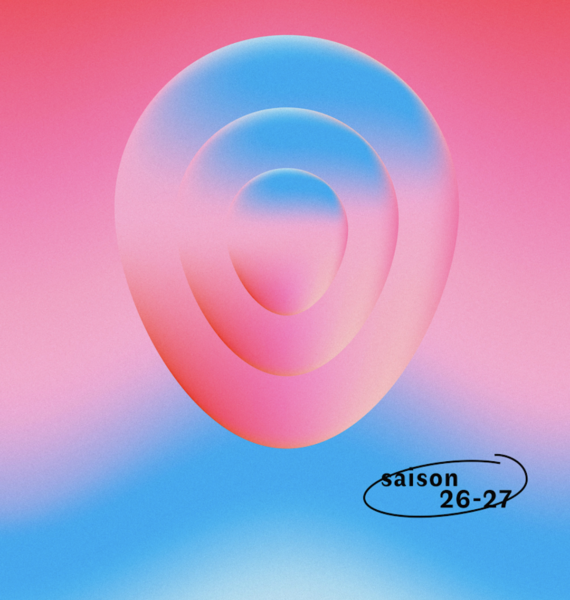
Appel à résidence – Mas Baudran
Le Mas Baudran, association engagée pour la préservation de la biodiversité en Camargue, ouvre sa seconde résidence artistique. Intitulée «…

The Sustainability Review (TSR) is seeking submissions for its Spring 2014 issue. TSR is an online, open-access journal edited and published by graduate students at Arizona State University and hosted by the School of Sustainability. TSR features original research, opinion, and art pieces on the topic of sustainability.
The Spring 2014 issue will feature publications in the journal’s new video format: the “SciVO,” a short (7-10 minute) video that is transparent and educational while adhering to standards of scientific rigor and academic excellence. Submissions should be in the format of a script for a SciVO, NOT a finished video. If your script is accepted for publication, the TSR editing staff will work with you to produce your SciVO.
Submissions for this issue will be accepted until December 31, 2013 and will be published starting March 2014.
SUBMISSION GUIDELINES
General
The Sustainability Review is an online, open-access, English-language journal featuring original sustainability research, opinions, art, and features. The format of TSR publications is the “SciVO,” a short (7-10 minutes) video that is transparent and educational while adhering to standards of scientific rigor and academic excellence. We believe that anyone with an interest should be able to access, understand, and apply scientific knowledge. TSR is open to featuring the vast diversity of sustainability-related research: theories, challenges, concepts, processes, innovations, and evidence-based strategies. Submissions should be in script format; see below for precise submission instructions. We give preference to submissions that are interdisciplinary, creative, scientifically rigorous, concise, and easily understood by a broad audience. After a preliminary review by TSR editors, submissions will go through a rigorous, extended peer-review.
If the reviewers recommend the submission for publication, the TSR creative team will collaborate with the author(s) to produce the SciVO. TSR provides filming and editing services for all submissions. The author(s) is(are) also welcome to produce their SciVO if they can create a video that adheres to the standards set forth in these author instructions. For those videos produced by the authors, TSR editors must approve final version of the SciVO and may require up to two rounds of edits.
If you have questions regarding a potential submission, please contact our editor at: editorinchief@thesustainabilityreview.org
Audience
We believe that sustainability science research should contribute to usable outcomes for those affected by sustainability problems. This principle is the basis of our video format, through which researchers may reach a broad audience, including, but not limited to, high school and university students, the public, other scientists, and stakeholders. Our platform offers a unique and vital opportunity for interaction among scientists and a diverse public.
What is a SciVO:
Interview: TSR editors may conduct an interview with the author(s) to generate footage (or audio) for the SciVO. The interview(s) may be conducted via phone, internet, or in person, depending on the authors’ location and availability.
Please see our first SciVOs, coming in Spring 2013, for examples of a final product.
Impact factor
As a young journal, the impact factor of TSR is not established. However, we believe that TSR’s hallmark video-format and accessible style will engage a broad viewership. In addition, publishing SciVOs introduces the possibility of knowledge transfer “going viral” through social media platforms, making the potential for impact significant.
Guide for Authors
The submission process occurs entirely online. All correspondence with the editors, including the editors’ decision and requests for revision, occur via email. It may be necessary to meet with members of the TSR team (in person, via phone, or internet) for the interview that will become part of your SciVO content.
What a SciVO submission looks like:
Submissions should be Microsoft Word files, containing the proposed SciVO script, not a finished video product. The submission document should follow these TSR format guidelines:
The submission should follow the following order:
Copyright
The Sustainability Review is an open-access online journal. Material published by The Sustainability Review is licensed under the Creative Commons Attribution-ShareAlike 3.0 Unported license.
Optional Material
Author support
TSR will be providing examples of storyboards for SciVOs. These sample instructional videos may be helpful as you develop your script.
Extended Peer Review
If the TSR editors find your submission appropriate for publication in TSR, we will send your script to appropriate reviewers for rigorous, extended peer review. Authors are required to identify four qualified reviewers, including at least one researcher, stakeholder, and practitioner. It is preferable that the author does not have a personal relationship with the recommended reviewers. For stakeholders and practitioners, authors can recommend a type of stakeholder and practitioner (e.g. “community organizer” or “farmer”) rather than specific individuals. Reviewers will be asked to comment on content, clarity, validity, and so forth.
Submission
Email your script submission to editorinchief(at)thesustainabilityreview.org
Read more on : www.sustainablepractice.org
Le Mas Baudran, association engagée pour la préservation de la biodiversité en Camargue, ouvre sa seconde résidence artistique. Intitulée «…
Pour sa septième édition, programmée du 5 au 21 juin 2026, le festival national Nuits des Forêts ouvre un appel…
Le programme Science4Reefs lance un nouvel appel à candidatures pour sa résidence artistique située sur le Motu Fare One, un…

